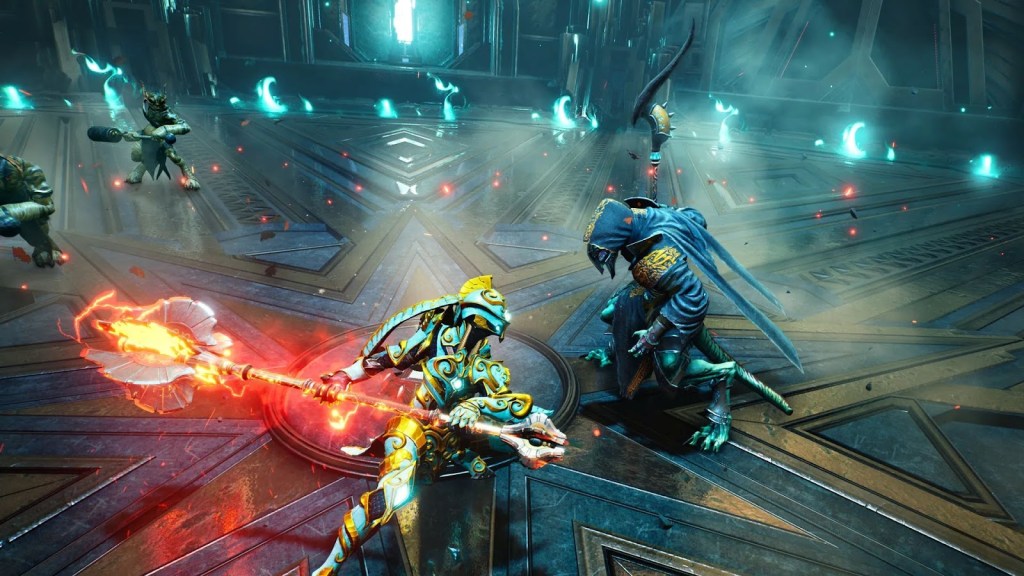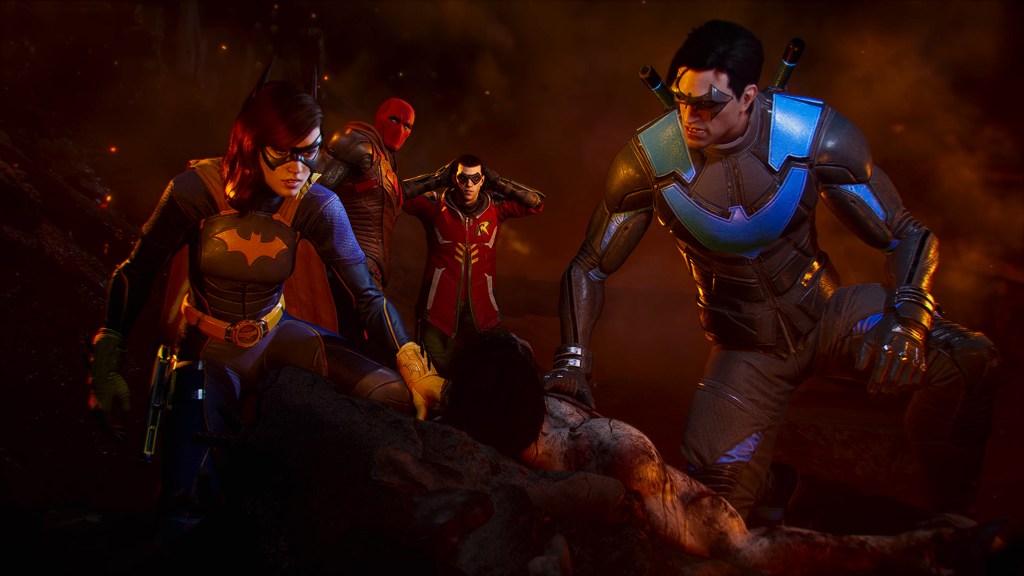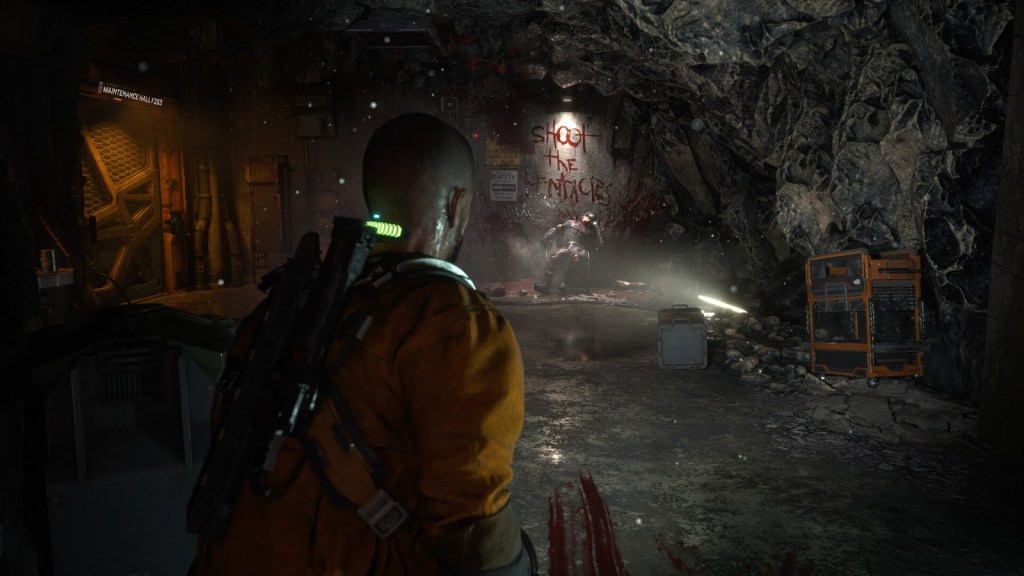There are some games, like Cyberpunk 2077 and No Man’s Sky, that had a rocky launch. They under-delivered and were hated on out of the gate. However, continuous updates by the developers turned things around, and people now love them. But the opposite is just as true.
Videos by ComicBook.com
There have also been games that sold people on the ideas of fast load times or next-generation visuals. These were games that people pretended to like, whether it was because of the fear of missing out or something else. But after everyone got an extended hands-on session with them, they couldn’t keep praising them any longer. This list brings you the worst cases of when this happened. So, from a seven-year-long hype train failing to a launch exclusive overpromising, here are the worst games everyone pretended to like at first but actually hated.
1) Godfall

Godfall was released a week after the PlayStation 5 launched in November 2020. It was marketed to be a next-generation action game, promising to take full advantage of the new hardware. The trailers made everything look amazing. The load times were promoted as near instant, the visuals were a crisp 4K, and the refresh rate appeared to be a stable 60Hz. This was a massive leap ahead of the PlayStation 4. When Godfall finally arrived, it delivered on these promises.
However, while Godfall was technically a brilliant achievement, it was terrible as a game. The narrative was bland. The Soulslike hack-and-slash gameplay was decent, but it forced mindless grinding. You’d be looting one pointless item after the other. It was total sensory overload.
Areas all looked the same, like little arenas where you’d fight continuous enemy waves. This got repetitive fast. Many people initially loved Godfall because it was one of the first next-generation games exclusive to the PS5. But once the hype died down, everyone was just as quick to acknowledge Godfall wasn’t even half as good as it first seemed.
2) Gotham Knights

After helping Rocksteady develop Batman: Arkham Knight in 2015, WB Games Montréal went off the radar until 2022. That’s when they released Gotham Knights, an action RPG with co-op. Now, instead of Batman, players would control the Bat Family: Red Hood, Nightwing, Batgirl, and Robin. The solo and co-op campaign was a big deal. This time, we’d also finally get to explore a lifelike open-world Gotham with citizen NPCs roaming the streets.
There was considerable hype going into Gotham Knights, given WB’s track record. When it was eventually released, many players loved that Gotham Knights let them play as their favorite side characters. However, that was Gotham Knights’ best offering. Besides the novelty of featuring superheroes, Gotham Knights was mundane. It had a bunch of bad game design choices. For a narrative-driven game, it featured in-game currencies to buy items. Combat was extremely repetitive, demanding only the spamming of buttons. The traversal was slow and dull. Gotham Knights lacked all the things that made Arkham Knight great.
From graphics to gameplay, it felt as if Arkham Knight was the game that came out in 2022. Ultimately, more and more players came to the opinion that Gotham Knights is a dull game. Gotham Knights’ player count plummeted to less than 1500 on Steam after a few months. Talk about Gotham Knights died down as quickly as it began, and hardly anyone plays it anymore.
3) Just Cause 4
Just Cause 4 has a massive open-world, a destructible environment, and satisfying traversal options like gliding. Missions send you on quests where you destroy everything, so it’s quite a lot of fun — but only for the first two hours. After that, it’s all repetitive. The first few hours of Just Cause 4, you’re accepting quests, shooting bad guys, and gliding across a giant map. But a dozen hours later, it’s still the same thing over and over.
When most people played Just Cause 4, they had a dopamine rush. But when the dopamine wore off after the first few missions, everybody realized there wasn’t much else to keep playing the game for. The missions were repetitive. The storyline was nonexistent and disappointing. There weren’t any memorable side characters either, and the combat was exactly the same in the first and tenth hour of gameplay. Everyone who played Just Cause 4 praised and recommended it at first. However, at a certain point, the majority ended up accepting that Just Cause 4 was nowhere near a unique experience.
4) The Callisto Protocol

The creator of Dead Space was making a big comeback with a new epic, The Callisto Protocol. Dead Space was considered a milestone in survival-horror gaming, and The Callisto Protocol was labelled as a spiritual successor to the series. All eyes were on it, and anticipation was through the roof. It grew even more so when the photorealistic visuals of the game were shown.
Eventually, release day came. The Callisto Protocol was classic survival horror. It received much praise and was loved by many until genuine critiques of its design popped up. People liked the story, but the level design was unbearable. The Callisto Protocol was super linear and small. You’d enter one tiny room after the other. It got claustrophobic real quick. The level design was just not inspiring.
The combat was non-existent as well, with automatic dodging and simple melee offense. While the narrative was good, the lackluster storytelling and awful gameplay ruined what could have been the new Dead Space. Once people started acknowledging that The Callisto Protocol wasn’t on par with modern AAA games, its fan base went downhill. The developer was subsequently hit with layoffs, and The Callisto Protocol became a much less likable game.
5) Starfield

Bethesda made The Elder Scrolls and the modern Fallout series, two of the greatest RPG franchises of all time. Bethesda had only worked on these two series since 1994. So, when it was announced that Bethesda was developing Starfield, their first new IP in 25 years, the industry was buzzing with excitement. Because of Bethesda’s track record, people assumed Starfield would be a guaranteed banger. However, Bethesda’s legacy was so great that it started to cover up what was a mediocre game. People weren’t interested in Starfield because it was good, but rather because it was made by such a renowned studio that it couldn’t be bad. But it was.
Starfield had a massive launch. It hit 6 million players worldwide within a week, but the fall off was just as crazy. There was much praise for Starfield at first. Praise for how the space setting was so good and the shooting so fun. But while Starfield did feature “1000+ explorable planets” and hundreds of quests, they were really bad. The planets were procedurally generated. There was nothing of interest to them. They were ninety-five percent terrain and five percent reused locations.
There were no ground vehicles to cover long distances. The questlines were good, but the storytelling ruined them. NPCs were less lifelike than they were in Skyrim, a game Bethesda made over a decade prior. Starfield had spaceships, but there was no seamless flying. You’d still need to fast travel between locations, and worst of all, from entering to exiting a building, everything had loading screens. So, it came as no surprise that everyone started pointing these things out. And once that started happening, people turned on Starfield as quickly as they possibly could.








